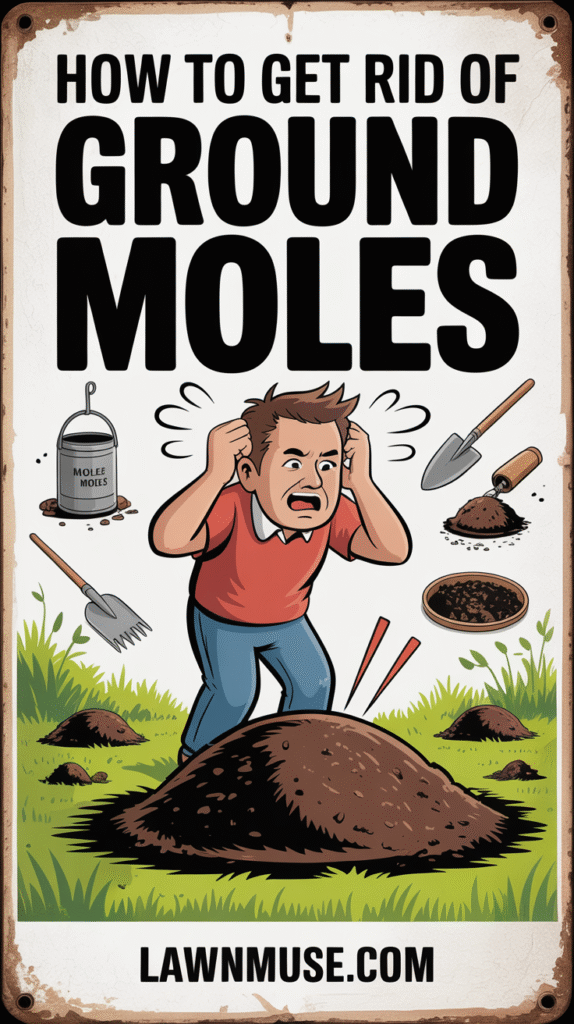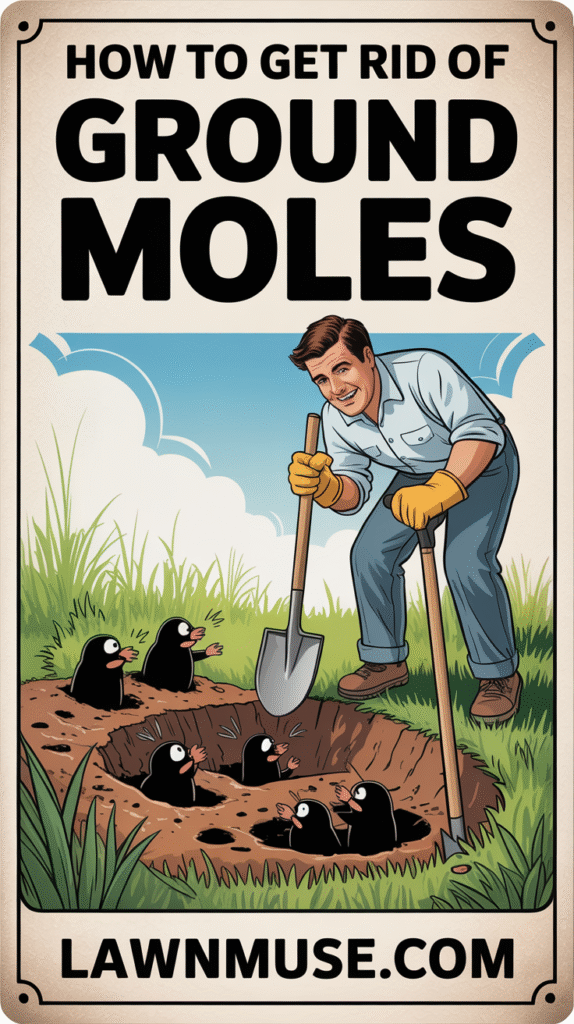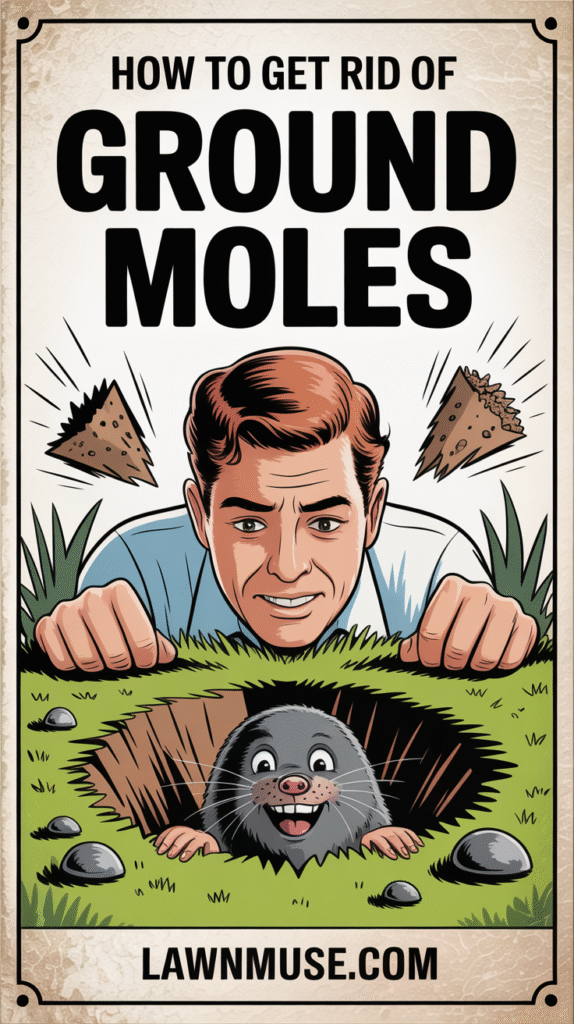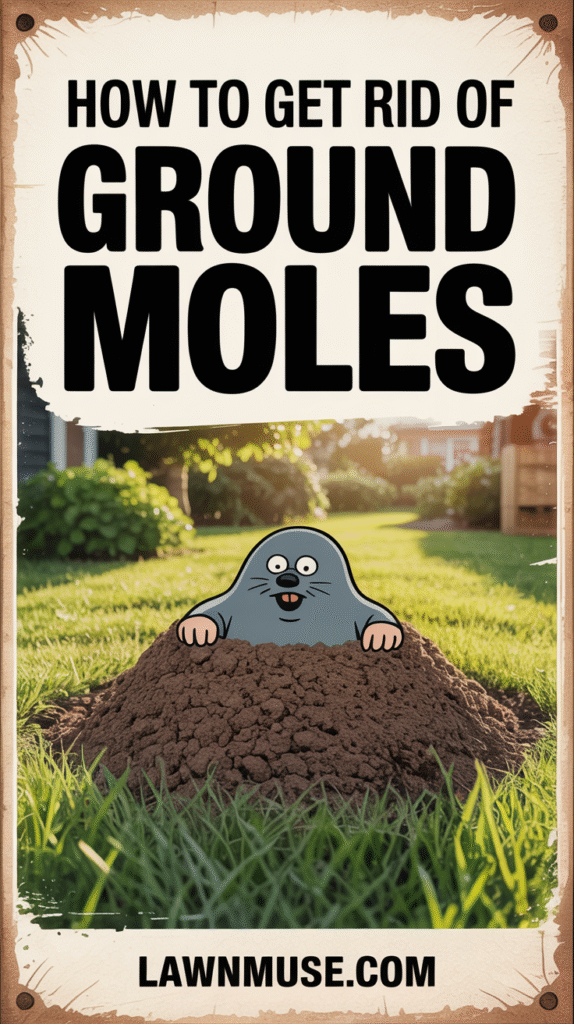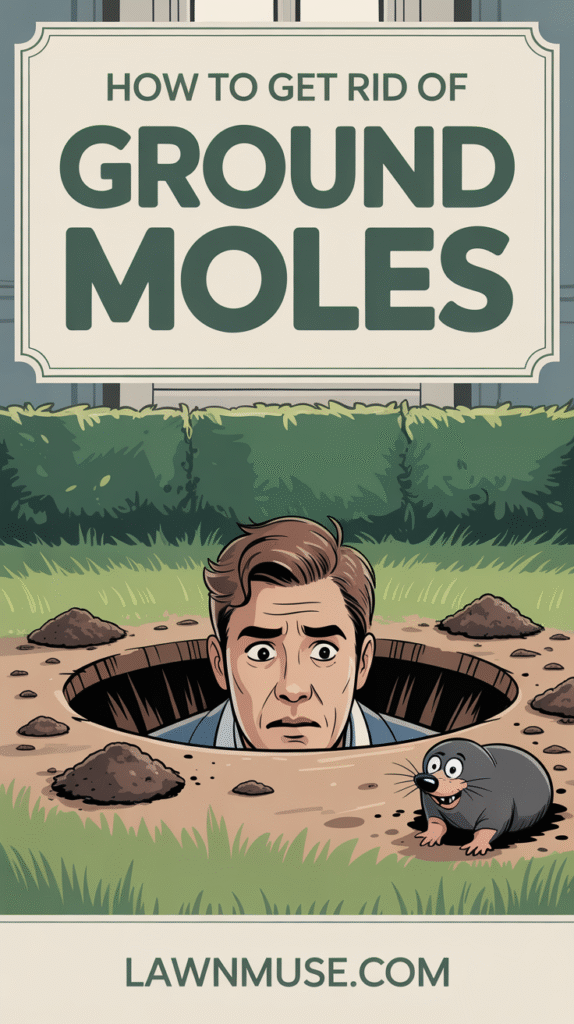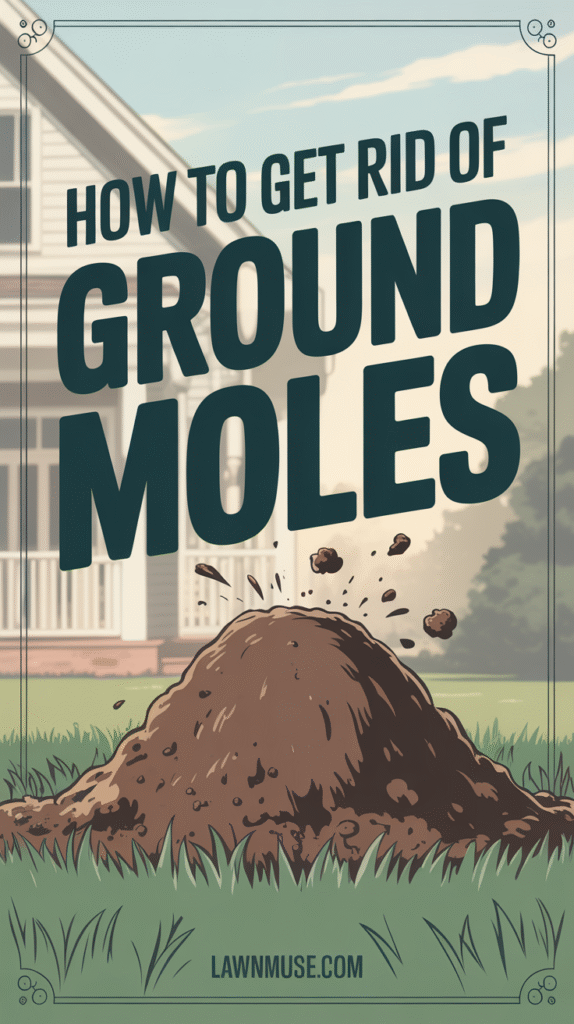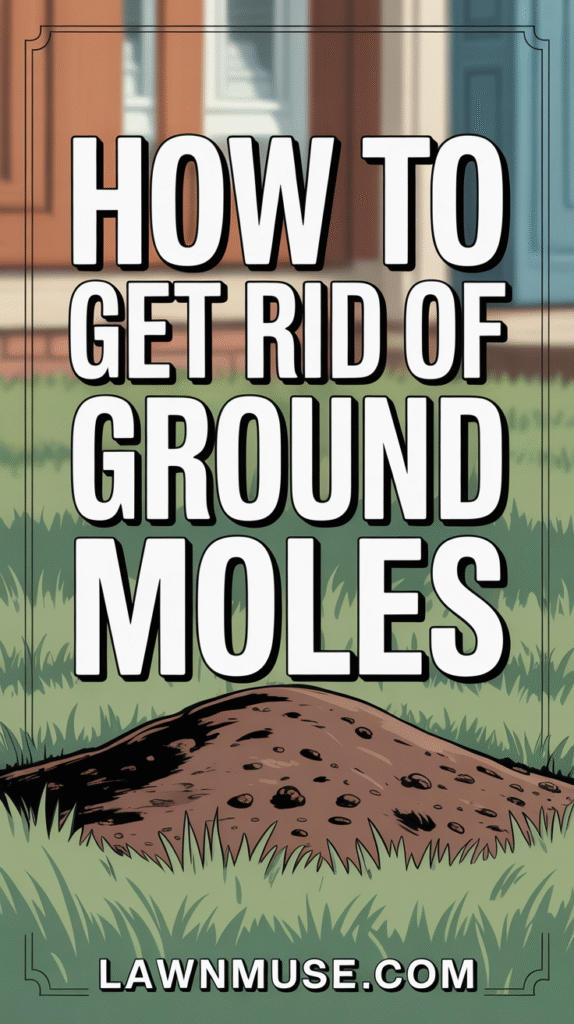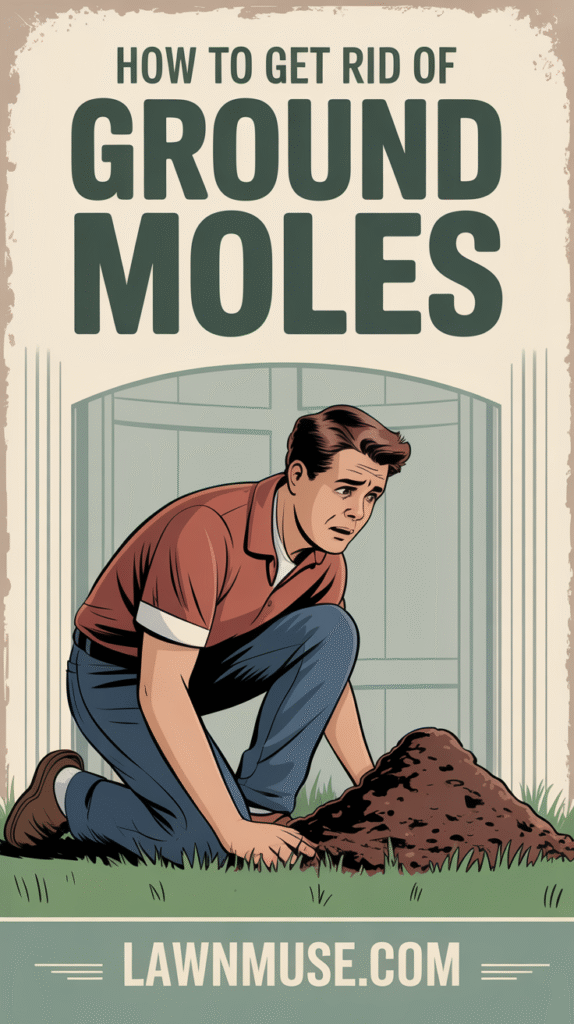Ever walked across your beautiful lawn only to feel soft, uneven ground beneath your feet? Or perhaps you’ve spotted those unsightly mounds of dirt popping up overnight? Chances are, you’ve got moles making themselves at home. These intriguing subterranean creatures can turn a pristine yard into a minefield of tunnels and hills in what feels like moments. But don’t despair! You can reclaim your outdoor space. Let’s dive into understanding moles and how you can effectively encourage them to move on.
Understanding Moles
First off, let’s get to know these underground dwellers. Moles are fascinating animals, often mistakenly called rodents, but they’re actually members of the order Insectivora. They typically measure between 4.4 and 6.25 inches from snout to rump, with a tail adding another 1 to 1.6 inches. Weighing in at about 2.5 to 4.5 ounces, they’re chubby little creatures with distinct features. Look for their pointed, hairless noses, small eyes, and a lack of visible ears. Their eyes are light-sensitive and usually hidden by fur. You’ll also notice their large front paws with unique claws, perfectly adapted for digging. They primarily use their fleshy noses for their sense of touch as they navigate their underground world.
These are solitary animals, and finding more than three to five moles in an acre is actually considered a lot. They spend most of their lives below the surface, creating intricate tunnel systems that can span up to 2.7 acres for a single mole. These tunnels aren’t just for travel; they include special chambers for sleeping and even raising their young. Males expand their tunnels during the breeding season to find mates. A mother mole typically gives birth to three to four hairless babies, or pups, who start sprouting hair at 14 days old. They’re weaned at four to five weeks and leave the nest after about 33 days, becoming fully separated from their mother and tunneling home by five to six weeks. Moles generally have an average lifespan of about three years.
Their Diet: What Moles Really Eat
There’s a common misconception that moles tunnel through your garden to munch on plant roots. But here’s the truth: they’re not interested in your veggies or flowers. Moles are insectivores, which means they’re primarily after earthworms, grubs, slugs, and other insect larvae that live in the soil. In fact, they love earthworms so much that they can consume nearly their entire body weight in them every single day! All that continuous digging and tunneling takes a lot of energy, explaining their ravenous appetites.
Are Moles Really That Bad? (The Upside of Moles)
While the damage they cause to your lawn can be frustrating, moles aren’t entirely bad. Their constant tunneling actually helps aerate the soil, which can be beneficial for your lawn’s health. Plus, by eating harmful insects and their larvae, they act as natural pest controllers. In some environments, their presence can even redistribute nutrients in the earth. However, for many homeowners, any benefits are often outweighed by the unsightly damage they do to their yards and gardens.
Signs of Mole Activity
How do you know if you have a mole problem? The most obvious signs aren’t the moles themselves, but the evidence they leave behind.
- Mounds of Dirt: You’ll see small, volcano-shaped mounds of dirt, which are the entry and exit points of their tunnels. A few mounds might mean the problem is just starting, but many indicate at least one mole is actively burrowing. Mole mounds tend to be more circular than gopher mounds, which are crescent-shaped.
- Raised Ridges or Trails: Moles often create shallow tunnels just below the surface when searching for food, which appear as raised ridges or off-color pale trails in your lawn. The ground over these lines might feel soft or spongy when you walk on it.
- Patches of Dead or Dying Grass: As moles tunnel, they can upset the roots of your grass, leading to discolored, dying, or brown patches on your lawn. The longer they’re active, the more extensive this damage can become.
- Loose Soil: Soft spots in your turf can be a clear indicator of tunnels underneath.
- Sudden Increase in Weeds: When moles disturb and overturn the soil, they can create ideal conditions for weeds to thrive, leading to a sudden increase in their presence.
- Important Distinction: Moles don’t eat plants or roots. If you see gnaw marks on your vegetables or garden plants, you might actually have voles or mice, which are different pests altogether.
How to Get Rid of Moles
Once you’ve confirmed mole activity and decided it’s time for them to go, you have several strategies at your disposal. The most effective approach often involves combining different methods.
Eliminate Their Food Source
Since moles are after insects like grubs and earthworms, reducing these food sources can make your yard less appealing. You can use beneficial nematodes and milky spore to target grubs, though milky spore can take a few seasons to be fully effective. More aggressive grub killers, like insecticides, are also an option. While this method can help, remember that moles also feast on earthworms, which you likely don’t want to eliminate from your soil, as earthworms are considered their main food source by many experts. So, while reducing grubs might help, moles might simply shift their diet to other soil-dwelling creatures.
Use Repellents to Deter Moles
Repellents work by making your yard an uncomfortable place for moles, encouraging them to leave without causing them harm.
- Homemade Remedies: A popular and reliable DIY repellent involves a mixture of castor oil and dish soap. Castor oil is known to upset a mole’s digestive system if ingested and can irritate their skin. This makes your yard a hostile environment for them.
- To make it, combine three parts castor oil and one part dish soap. Then, add four tablespoons of this mixture to a gallon of water.
- Another recipe suggests mixing 2 ounces of dish soap with 4 ounces of castor oil and 2 quarts of warm water.
- For existing mole holes, pour the mixture directly into them. Pour the liquid into a garden sprayer and spray your lawn liberally, especially on mole activity areas. Repeat this process after about a week, especially in early spring before moles begin to reproduce, to deter them for the season. This mixture is considered safe for your household, including pets and plants, as it doesn’t contain toxic substances and simply dissolves into the soil, becoming an irritant that drives moles away.
- Some anecdotal methods include hosing out old cat litter boxes into problem areas or using Irish Spring bar soap shavings on mounds.
- Commercial Repellents: You can also purchase granular or liquid repellents that often contain castor oil. These are absorbed into the soil, making tunnels and food sources distasteful to moles. They typically last for several weeks and are generally considered safe for lawns and pets when used according to label directions.
- Less Effective Repellents: Some common suggestions like moth balls, tea tree oil, and cayenne pepper have not been scientifically proven effective and should be avoided.
Planting and Using Barriers
Creating physical barriers or using certain plants can be a long-lasting way to prevent moles from entering or damaging specific areas.
- Deterrent Plants: Moles are said to dislike the smells from plants like daffodils, marigolds, and anything from the allium family. Planting these can add a colorful, natural barrier that’s generally safe for children and pets.
- Physical Barriers: For targeted protection, you can bury wire mesh or hardware cloth (with holes no bigger than 1/4 or 3/4 inch) around garden beds or valuable plantings. Dig a trench about 6 inches wide and at least 2 feet deep, then line it with the mesh. For even greater protection, bend a 6-inch lip of mesh at a 90-degree angle away from the planting. Ready-made barriers, like wire-mesh baskets for bulbs, can also protect individual plants or entire raised beds.
Dig a Trench and Line It
For more extensive protection of your lawn or garden, you can dig a trench around the perimeter. This human-made border should be approximately 2 feet deep and 6 inches wide. You can then fill it with rock or line it with wire mesh or hardware cloth that has holes no larger than 3/4 inches. This is a time-consuming method, but it provides a durable barrier against burrowing moles.
Scare Moles Away
Moles prefer undisturbed environments, so creating a nuisance can sometimes drive them off.
- Sonic Spikes/Vibrating Devices: These devices are inserted into the ground and emit electronic pulses or high-pitched buzzes (typically between 20 kHz and 65 kHz) to create irritating sounds. While appealing as a non-lethal option, scientific studies and consumer reviews on their effectiveness are mixed, with some moles potentially becoming accustomed to the sound over time. Environmental factors like soil type and density can also affect their performance.
- Sound and Vibration: Some users have reported success by placing a subwoofer playing bass-heavy rock music on a molehole for an hour a day. Even simple dollar-store pinwheels can create vibrations that might deter them.
- Predator Scents: The scent of a dog or cat’s fur or urine (or even commercially available coyote urine) can sometimes scare moles away. However, always exercise caution if encouraging pets to interact with wild animals, as gophers can carry diseases like fleas and ticks.
Trapping and Other Direct Methods
If prevention and repellents aren’t enough, more direct methods may be necessary. Trapping is often considered the most reliable and universally applicable method of mole control.
- Trapping: Various mole traps are available, including scissor-jaw, harpoon, and pincer-style designs. The key to successful trapping is identifying active tunnels (by flattening mounds/ridges and checking for renewed activity) and setting traps correctly in main, frequently used tunnels. Patience is often required, as it can take several days for a mole to activate a trap. Some humane traps exist that allow you to catch and release moles in a rural area far from your home.
- Physical Removal: If you’re vigilant, you can sometimes physically remove moles by waiting quietly near active tunnels for ground movement. Once you see movement, quickly insert a shovel or spade behind them to block their escape and then dig them out.
- Poison Baits: Traditional grain-based baits are usually ineffective because moles eat insects, not grains. However, worm-shaped gel baits designed to mimic earthworms (containing ingredients like bromethalin, e.g., Talpirid) can be placed directly into tunnels. There are also gopher and mole poison peanuts available. Always follow label instructions carefully, as these can be hazardous to pets and children.
- Extreme Methods (Use with Caution): Some homeowners have tried methods like flushing tunnels with water (often ineffective due to extensive tunnel systems), using exhaust fumes from a vehicle via a hose into a burrow, or even smoke bombs. Juicy Fruit gum has also been suggested, with anecdotal claims that moles ingest it and cannot digest it, leading to death. Marshmallows are also claimed to be harmful due to carrageenan, which moles cannot digest and eventually die. These methods come with significant risks and varying degrees of effectiveness, and some are not recommended due to safety concerns or potential harm to the environment.
When to Call a Professional
If you’ve tried various methods and the moles are still wreaking havoc, it might be time to call in the experts. Professional pest control services can assess your specific situation, identify the extent of the problem, and efficiently remove moles from your property. They can offer specialized solutions and expertise that can save you time and frustration, often providing guaranteed results.
Integrated Pest Management: A Holistic Approach
Ultimately, dealing with moles (or any pest) effectively often comes down to an Integrated Pest Management, or IPM, approach. IPM isn’t about completely eradicating every pest; it’s about managing populations to a tolerable level using a variety of practices. This multi-tiered strategy prioritizes cultural practices (like habitat modification and proper lawn care) and biological controls (like encouraging natural predators). Chemical controls, such as repellents or targeted baits, are considered as a last resort or as part of a balanced strategy. The goal is to strike a balance between the cost of control and the benefit of maintaining a healthy, beautiful yard. Being knowledgeable about moles and consistent in your efforts is your most powerful tool in winning the battle for your lawn.
Conclusion
Moles might be intriguing little diggers, but they don’t have to take over your outdoor sanctuary. By understanding their habits and employing a combination of deterrents, barriers, and, if necessary, direct removal methods, you can effectively manage their presence. Choose the strategies that best fit your lifestyle and your commitment to maintaining a healthy yard. With persistence and the right approach, you can restore your lawn to its former glory and enjoy your outdoor space mole-free!
